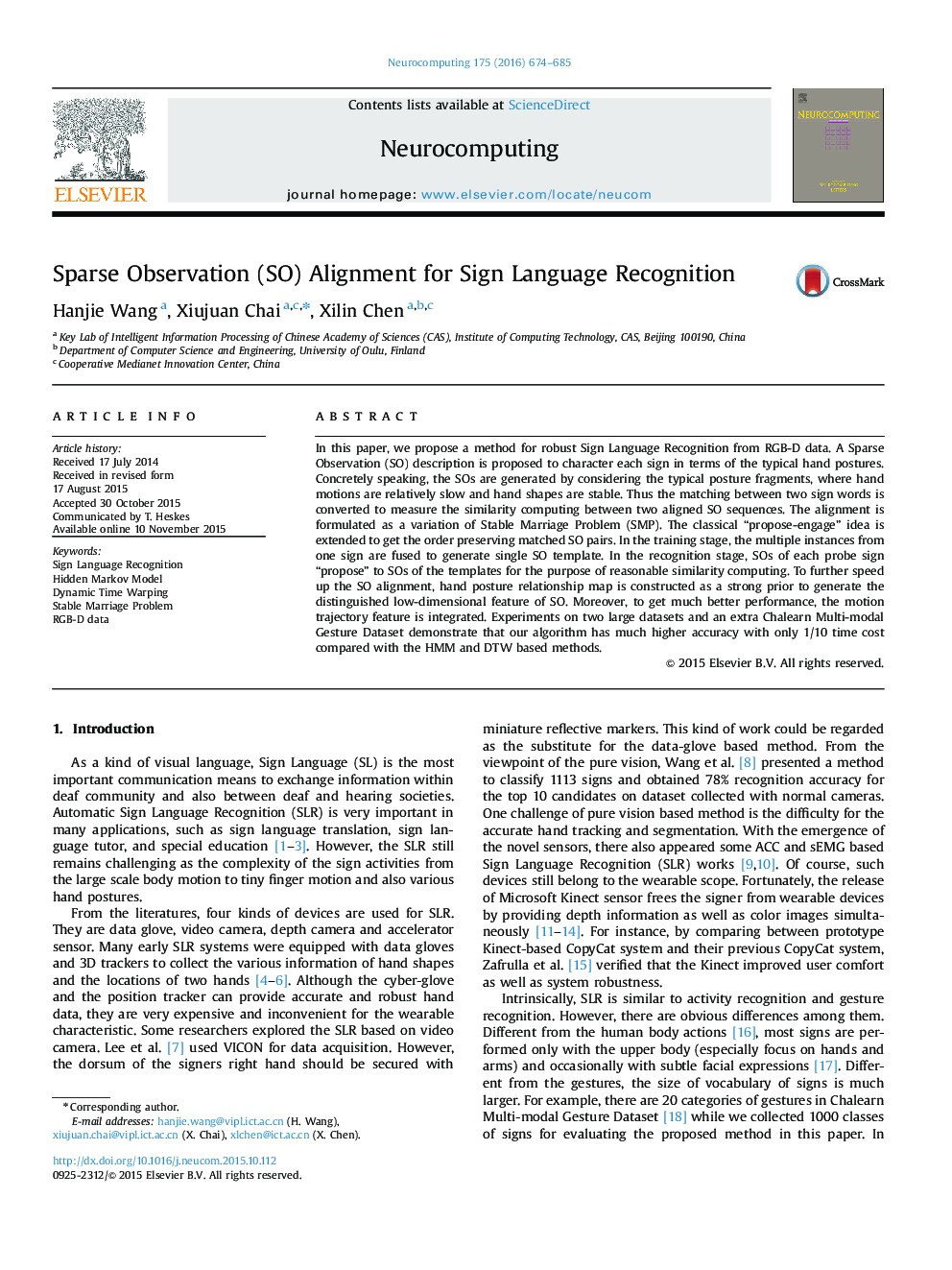| Article ID | Journal | Published Year | Pages | File Type |
|---|---|---|---|---|
| 407198 | Neurocomputing | 2016 | 12 Pages |
In this paper, we propose a method for robust Sign Language Recognition from RGB-D data. A Sparse Observation (SO) description is proposed to character each sign in terms of the typical hand postures. Concretely speaking, the SOs are generated by considering the typical posture fragments, where hand motions are relatively slow and hand shapes are stable. Thus the matching between two sign words is converted to measure the similarity computing between two aligned SO sequences. The alignment is formulated as a variation of Stable Marriage Problem (SMP). The classical “propose-engage” idea is extended to get the order preserving matched SO pairs. In the training stage, the multiple instances from one sign are fused to generate single SO template. In the recognition stage, SOs of each probe sign “propose” to SOs of the templates for the purpose of reasonable similarity computing. To further speed up the SO alignment, hand posture relationship map is constructed as a strong prior to generate the distinguished low-dimensional feature of SO. Moreover, to get much better performance, the motion trajectory feature is integrated. Experiments on two large datasets and an extra Chalearn Multi-modal Gesture Dataset demonstrate that our algorithm has much higher accuracy with only 1/10 time cost compared with the HMM and DTW based methods.
